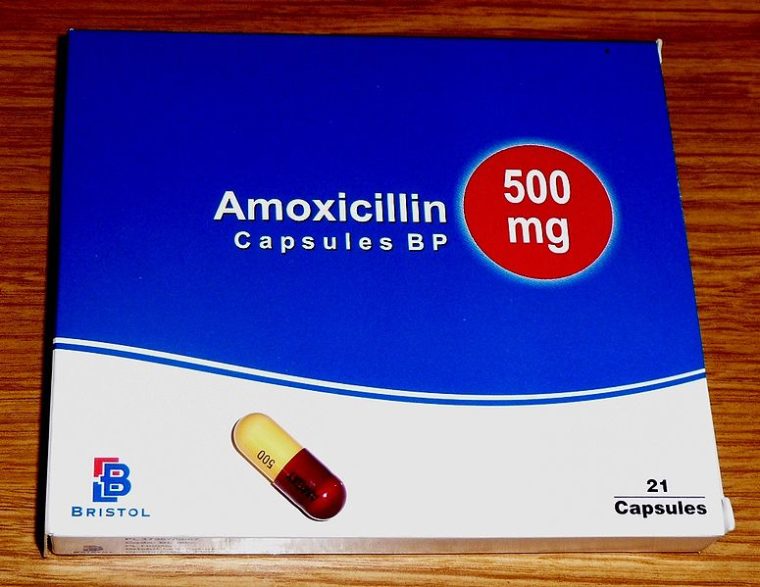
Click to Skip Ahead
Growing up, you were likely prescribed amoxicillin at some point in your life. You may know that it’s an antibiotic, but you may not really know much more about it. Amoxicillin can also be prescribed for our feline friends. It’s a fairly common antibiotic to prescribe, especially in younger cats and kittens. In this article we will discuss what amoxicillin is, what it’s used for, and any potential side effects that you may see in your cat from using it.
What Is Amoxicillin?
Amoxicillin is a type of antibiotic used to treat bacterial infections. Antibiotics are classified into groups by how they work. In other words, what the medication does to bacteria to either kill the bacteria, stop the bacteria’s growth, etc. Amoxicillin is considered a penicillin antibiotic. Amoxicillin, similar to other penicillin antibiotics, inhibits the bacterial cell walls from forming appropriately in susceptible bacteria. This leads to weakening and destruction of the cell wall, and death of the bacteria.
Amoxicillin is available in an injectable form, though this can only be given by a veterinarian in a hospital and/or clinical setting. Most commonly, amoxicillin will be prescribed to your cat in oral form. In other words, your cat will be given the antibiotic in a liquid, pill, or capsule that they need to take by mouth and swallow in order for it to be effective.
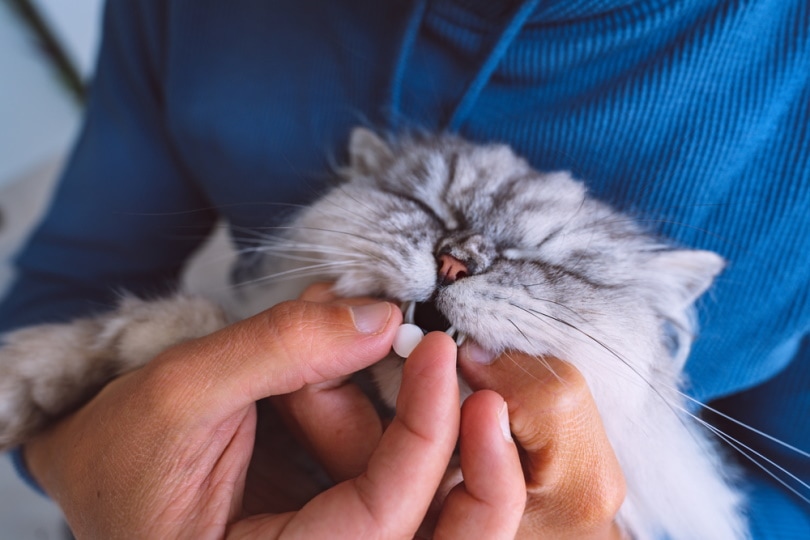
How Does Your Veterinarian Decide to Prescribe Amoxicillin?
Bacteria are single-celled organisms classified by their shape, oxygen needs, and staining properties. There are millions of bacteria. Almost every area in and on the body of the cat has normal resident bacteria. These bacteria can be helpful and keep your cat healthy. Other types of bacteria which are foreign, or even an overgrowth of a normal bacteria, is what can make your cat sick.
Bacteria shapes are grouped into being cocci (sphere or round shaped), bacilli (rod shaped), or spirochetes (spiral shaped). Bacteria are also classified into groups based on if that specific bacteria requires oxygen to live, grow, and reproduce. It seems wild to think of, but there are organisms out there that actually don’t require oxygen like humans, cats, and other animals need in order to survive! If specific bacteria need oxygen for survival, they are classified as aerobes. Bacteria that do not require oxygen are called anaerobes. Other times, bacteria can live with or without oxygen, or perhaps only require oxygen for certain parts of their life cycle, and these are referred to as facultative bacteria. Bacteria are also classified by what color they may stain when looking at them under a microscope. Without going into detail, some bacteria are considered gram-positive and others are considered gram negative due to their color change during a gram stain (the process used to look at bacteria under a microscope).
It’s important to know these characteristics of bacteria as this helps your veterinarian decide what antibiotic they may choose for certain things. Different antibiotics will be effective against different classifications of bacteria. Amoxicillin is often used for bacterial infections that may develop in the respiratory tract, urinary tract, gastrointestinal tract, and/or skin. Amoxicillin is not effective against bacteria that produce penicillinase. These are all things your veterinarian will consider when choosing amoxicillin or another antibiotic for your cat.
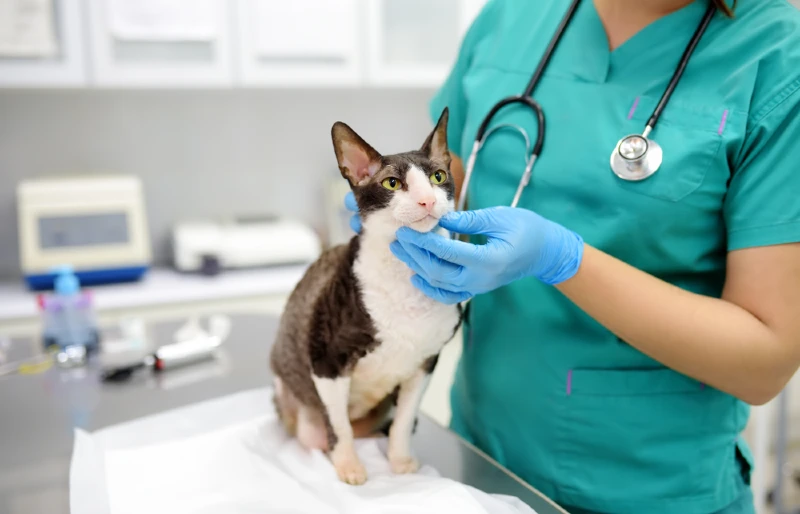
What Are the Side Effects of Amoxicillin?
Most commonly, amoxicillin will be prescribed to your cat in oral form. In other words, your cat will need to take the medication by mouth and swallow it in order for it to be absorbed and work appropriately. While there is an injectable form of amoxicillin, this is only for use by your veterinarian in the hospital so we will not discuss it here.
As many people may already know, getting medications into a cat can be extremely difficult. If given as a liquid, your cat may hate the flavor and spit, foam, and drool once they have swallowed the medication. This isn’t because your cat is having a reaction to the amoxicillin, but because your cat hates the taste and flavor of the medication. Often getting a pill into your cat is much easier as they cannot taste it as much.
Once in the GI tract, the most common side effects that amoxicillin can cause are GI related. In other words: vomiting, diarrhea, and anorexia. This is why it’s usually recommended to give this antibiotic with food, as it can sometimes decrease the side effects on the GI tract.
While common in humans, acute amoxicillin reactions are rare in cats. These include skin rashes, skin swelling/redness/hives, anaphylaxis, collapse, fever and facial swelling. While in theory these can occur in your cat, they are extremely rare. However, if you notice any of these reactions, including an upset stomach, after your cat received amoxicillin, you should contact the prescribing veterinarian.
If you are allergic to penicillin yourself, then you should inform your veterinarian. They may choose a different medication for your cat, or you must ensure you always wear gloves and don’t come into contact with it.
How Do I Care for a Cat That May Need Amoxicillin?
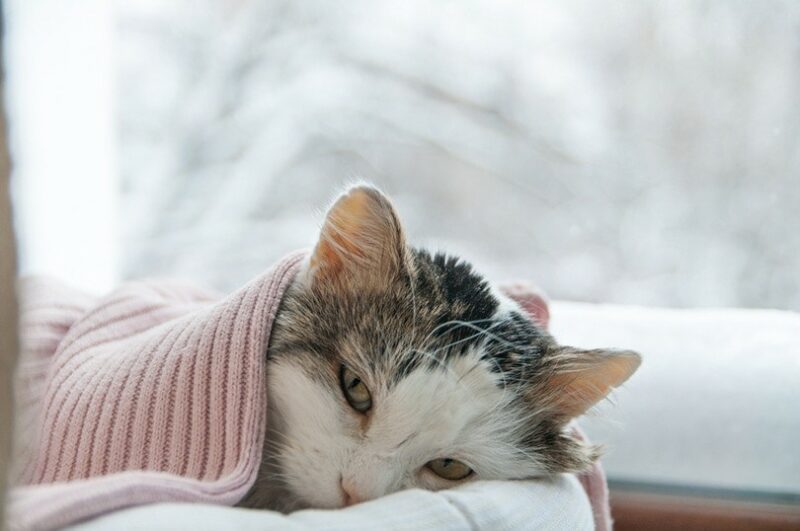
Amoxicillin is used for bacterial infections only. It is not effective in any way for the treatment of any type of virus. You may have noticed that your cat has a virus, and your veterinarian has prescribed amoxicillin. This may be because your cat has developed a secondary bacterial infection because their immune system cannot fight off the foreign bacteria. The amoxicillin will help clear the bacteria, but the virus may remain.
If your cat has an upper respiratory infection – snotty nose, sneezing, goopy eyes – they should be kept separated from any other cats in the house. Even if they are on amoxicillin, they can still sometimes spread the bacteria to other cats, and they usually have an underlying viral infection. If your cat is on amoxicillin for a skin or urinary infection, speak with your veterinarian about whether they want you to keep your cat separated or not.
The amoxicillin can be given without food, but with a meal is usually best. You may be able to hide the pill or liquid in food to give it to your cat, or sneak it into them while they are eating a meal. Either way, the food will help to decrease any GI upset that may occur from the medications. While your cat is on amoxicillin, monitor for any diarrhea, anorexia, itchy skin, or lethargy. If you notice anything, always speak with the veterinarian that originally prescribed the medication.
Frequently Asked Questions (FAQ)
What If Amoxicillin Doesn’t Work?
Some infections may not be susceptible to amoxicillin. If your cat has been on amoxicillin and the infection isn’t clearing, or the infection seems to come back as soon as you are done giving the medication, speak with your veterinarian. Depending on where the infection is located, your veterinarian may want to get a sample to send to the laboratory for a culture and sensitivity. In other words, the laboratory will grow the bacteria and test it against a lot of different antibiotics to see what will work.
What If I Can’t Get Medications into My Cat?
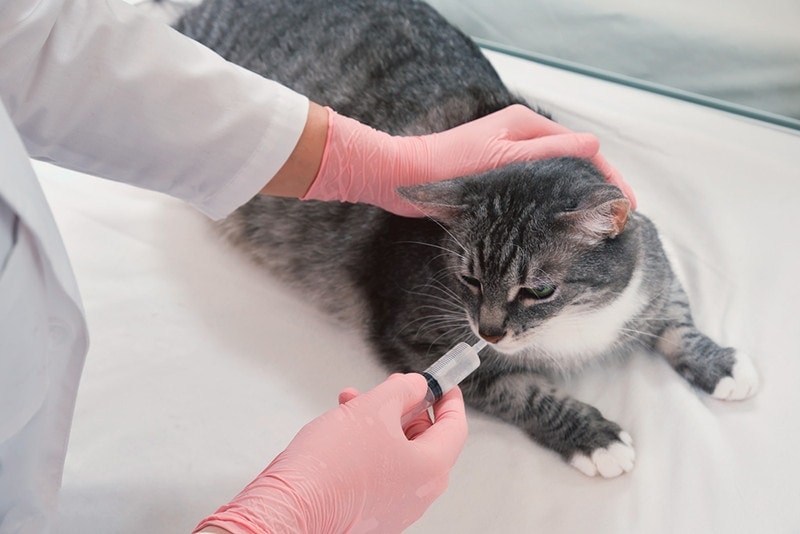
Cats can be extremely difficult to get medications into. Luckily, there are a lot of good options available nowadays to try to get around this. There are flavored liquids, flavored chewable pills, squishy food to hide pills in, and capsules that can be opened and mixed with food. Still, your veterinarian may be able to get a special pharmacy to make amoxicillin in a tasty form to give to your cat. This is called compounding.
Conclusion
Amoxicillin is a penicillin-type antibiotic, most commonly prescribed in cats for upper respiratory infections, urinary tract infections, and skin infections. As with other antibiotics, amoxicillin is not effective against any type of virus. Your veterinarian will likely prescribe your cat a liquid, pill, or capsule form of amoxicillin. Always follow the instructions your veterinarian provides for the medication and monitor for any side effects such as vomiting. If the amoxicillin doesn’t seem to be working, then your veterinarian may want to send a sample into the lab for a culture to try and find a more effective antibiotic.
Featured Image Credit: Amoxicillin (Smile a While, Wikimedia Commons CC BY 3.0)







